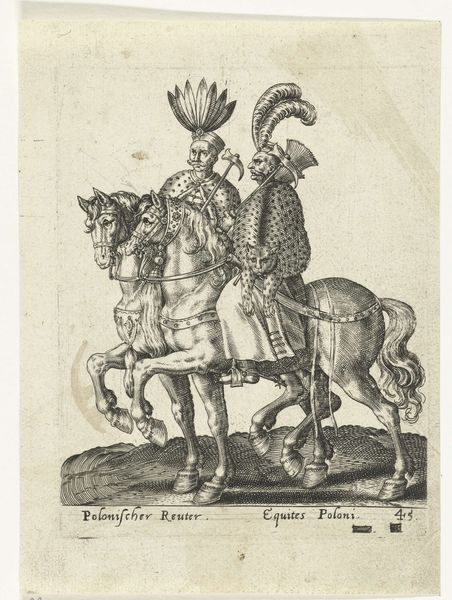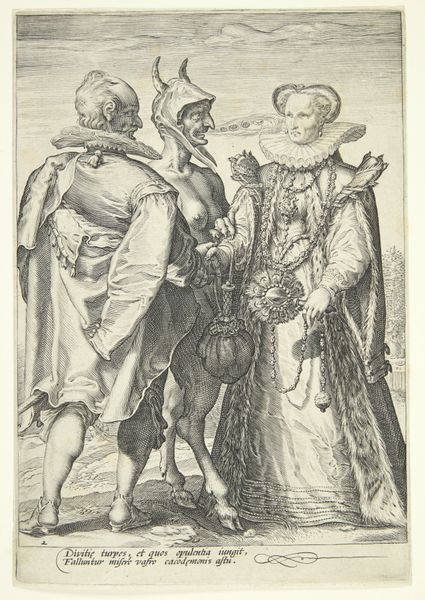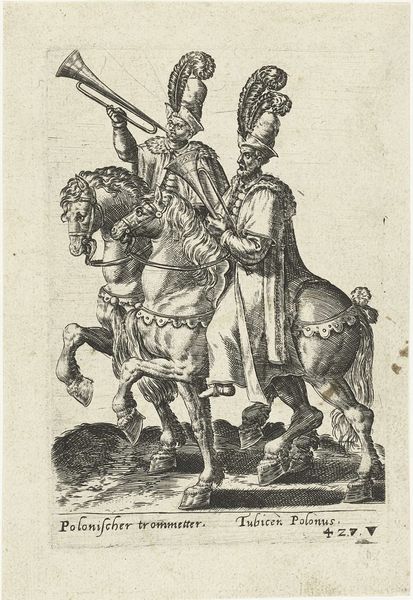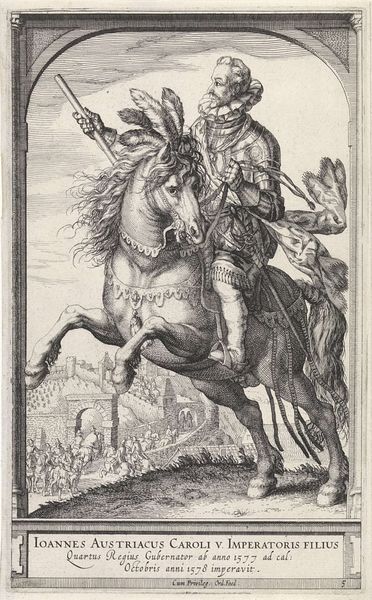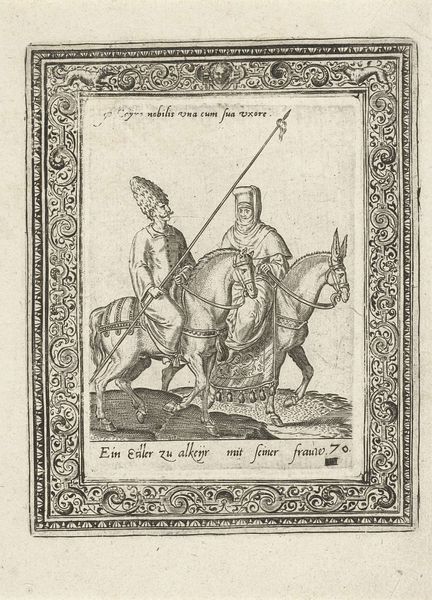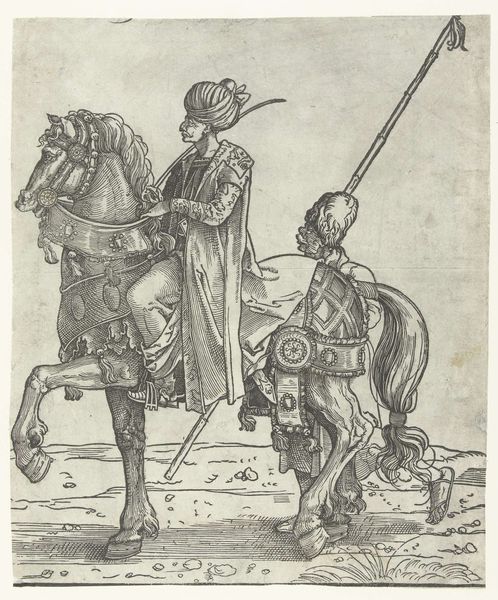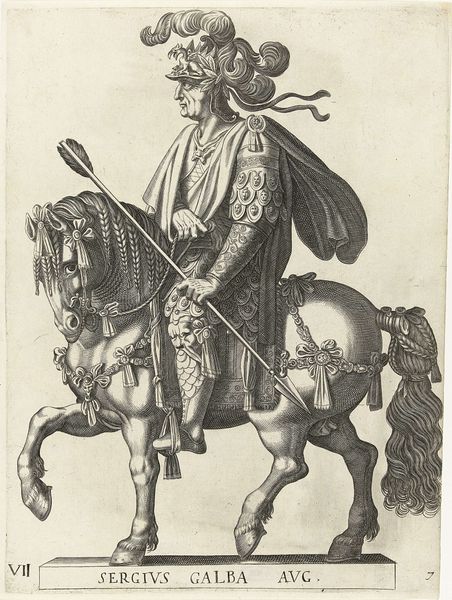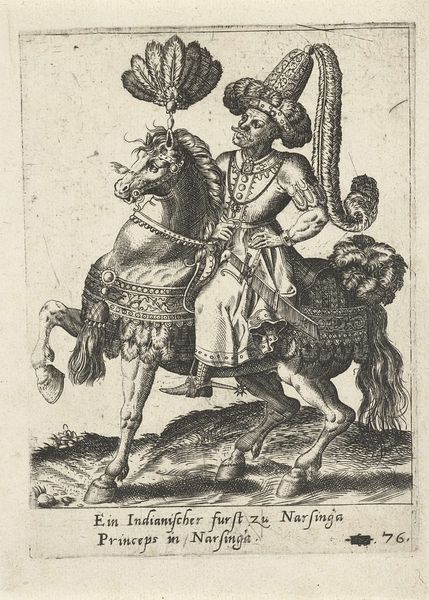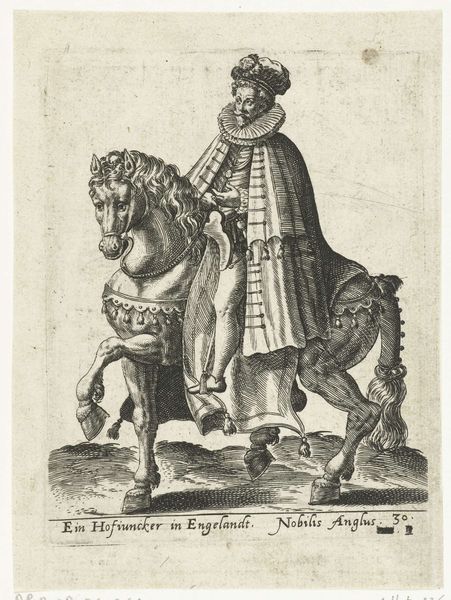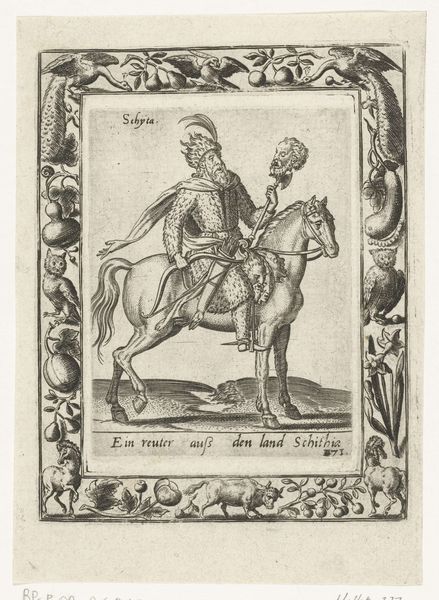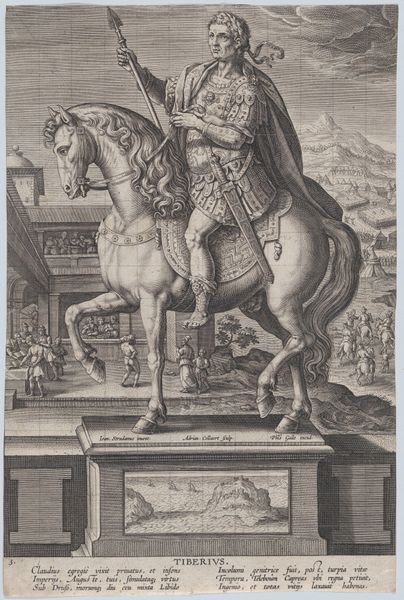
Ruiterportret van Albrecht, aartshertog van Oostenrijk, en Isabella Clara Eugenia, infante van Spanje 17th century
0:00
0:00
print, intaglio, engraving
#
portrait
#
baroque
# print
#
intaglio
#
group-portraits
#
history-painting
#
engraving
Dimensions: height 262 mm, width 162 mm
Copyright: Rijks Museum: Open Domain
Curator: Here we have an engraving from the 17th century, currently held in the Rijksmuseum: "Ruiterportret van Albrecht, aartshertog van Oostenrijk, en Isabella Clara Eugenia, infante van Spanje" or, in English, the Equestrian Portrait of Archduke Albert of Austria and Infanta Isabella Clara Eugenia of Spain. Editor: Oh my, they look so serious. Even the horses seem a bit stiff. It has this real air of "we mean business." Is it just me, or does it feel less like a portrait and more like…propaganda? Curator: Indeed, one might interpret it that way. Consider the formal elements. The strong verticality, the imposing figures centrally placed, and the elevated perspective – these contribute to a sense of authority and grandeur. Also, observe the intaglio technique, particularly how the delicate network of lines suggests depth and detail, crafting a noble representation intended to underscore their dominion. Editor: And the ruffs! My word, those elaborate lace collars. Talk about creating distance—literally and figuratively. And that framing arch…it’s like they’re on stage. Curator: Precisely. It functions as a proscenium, presenting the subjects in a carefully constructed tableau. Note, too, how the surrounding details are minimized, placing emphasis on their regalia, serving as visual signs of their status and power within a turbulent historical moment. Editor: Makes me wonder what their lives were *really* like. Beyond the jewels and the perfectly posed steeds. Were they happy, miserable, or just really good at playing the roles they were born into? You know? Like, behind all the structural magnificence, there must've been just some ordinary humans somewhere. Curator: Perhaps. Though that perspective falls slightly outside the scope of pure formalism, doesn't it? But reflecting upon the interplay between artifice and perceived reality remains vital for the spectator when looking at historical representations such as these. Editor: I guess what I’m taking away from it is this idea of constructed image versus the truth of the individuals. It's quite potent, actually. Curator: A pertinent observation. Thank you for sharing this, offering a crucial nuance that enhances the understanding of such images.
Comments
No comments
Be the first to comment and join the conversation on the ultimate creative platform.

